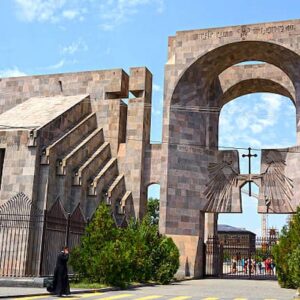The wedding season ends, the intense heat of the Goan summer breaks, and a palpable wave of fresh green washes over the landscape. This isn’t just the start of the glorious monsoon; it’s the arrival of one of Goa’s most unique, vibrant, and soul-stirring festivals: Sao Joao Festival .
Celebrated every year on June 24th, the Feast of St. John the Baptist, or São João, is a deeply rooted cultural tradition that perfectly blends religious devotion, agricultural gratitude, and sheer, unadulterated monsoon revelry. It’s a festival defined by water, flowers, music, and—most famously—the joyous act of plunging into wells.
For those seeking an authentic, unforgettable Goan experience, São João is the very essence of a “Soul Vacation.”
👑 The Significance of the “Leap of Joy”
The most iconic and defining ritual of São João is the leap. Young men, and often revelers of all ages, jump enthusiastically into village wells, streams, ponds, and even swimming pools.
The Biblical Connection
This tradition is rooted in the Christian belief that Saint John the Baptist, while still in his mother Elizabeth’s womb, “leaped for joy” upon the visitation of the Virgin Mary, the mother of Jesus. The leap into the water bodies is a symbolic re-enactment of this joyous moment and a reminder of St. John’s role as the baptizer in the River Jordan.
The Monsoon Magic
However, in Goa, the festival has beautifully merged with the local agricultural cycle. June 24th is right when the monsoon rains have replenished the earth, filling the wells and transforming the parched land into a lush paradise. The jump is also an act of gratitude and prayer for the bounty of the rains, the fertility of the land, and a good harvest. It is a true communion with nature, a washing away of the old, and a welcoming of new life.
🌺 The Colourful Traditions: Kopels and Sangodds
The visual and auditory experience of São João is as rich as its history.
The Kopel: Crown of Nature
Every participant, from the youngest child to the oldest reveler, wears a beautifully woven headgear known as the ‘Kopel’. These vibrant crowns are meticulously crafted from the freshest leaves, monsoon flowers, and seasonal fruits like jackfruit, mangoes, and pineapples. The Kopel is a stunning visual symbol of the fertility and abundance brought by the monsoon, turning every celebration into a moving garden.
The Sangodd: Boat Parades and Unity
While celebrated across Goa, villages like Siolim in the North host spectacular events centered around the water. Here, the famous ‘Sangodd’ parades take place. Two fishing boats are creatively tied together to form a stage, adorned with colorful themes, banners, and statues of St. John. Villagers board these rafts, singing traditional mandos and folk songs to the beat of the ghumot (a traditional percussion instrument) and kansallem (cymbals), sailing down the Chapora River. The Sangodd symbolizes the unity and bond (sangodd literally means union) of the community.
🥂 A Feast for the Newlyweds and the Community
São João is also known as “Zanvoianchem Fest” (Feast of the Son-in-Law). This tradition is an intimate, heartwarming celebration of family and new beginnings.
- The newly married son-in-law is invited to his bride’s ancestral home for a grand feast.
- He is crowned with a Kopel and is traditionally led by the family to the nearest well, where he performs the symbolic ‘leap of joy’ to announce his arrival into the new village life.
- Upon his return home, he is gifted a basket (Ojem) filled with seasonal fruits, sweets, and gifts from his mother-in-law, which he then distributes to his own villagers, signifying the joining of the two families (and two villages) through the marriage.
This deep-seated family ritual reinforces community bonds and ensures that the festival is as much about shared joy as it is about faith.
The Culinary Soul of São João
No Goan festival is complete without a delicious culinary spread. São João brings out the best of monsoon-special Goan cuisine:
- Sannas: Fluffy, steamed rice cakes fermented with coconut palm toddy.
- Patollyo: Sweet dumplings made of rice and jaggery, delicately wrapped and steamed in turmeric leaves.
- Feni: The local spirit (cashew or coconut) flows freely, adding to the high spirits and merriment.
- Seasonal fruits, particularly jackfruit, mango, and pineapple, are blessed and shared in abundance, a sweet nod to the harvest.
🌟 Embracing the São João Spirit
While the grandest celebrations are often found in villages like Siolim (North Goa), the festival is celebrated across the state with distinct village flavours. South Goa, in particular, offers a more intimate and traditionally authentic experience, where the celebrations are often smaller, more personalized, and centered around local communities and family homes.
Whether you’re watching the decorated boats glide down the river or simply walking through a village and hearing the enthusiastic calls of “Viva São João!”, the energy of this festival is contagious. It is an invitation to shed the burdens of the past, embrace the cleansing power of the monsoon, and leap wholeheartedly into a moment of pure, collective Goan joy.
If you are planning a “Soul Vacation” to Goa, time your visit for June 24th. You’ll not only witness history and culture but participate in a tradition that genuinely celebrates life, love, and the magic of the monsoons.
Are you interested in finding a local guide or a boutique resort in a South Goan village to experience a more intimate São João celebration?



